I have a data set where I need to compare the first number in each transect against each other.
For example, in the below data set I need to compare cells D2, D7, D12 and D17 and assign a value based on which one is the smallest number, the next smallest and so on. This will be used to assign the transect numbers in column A.
My issue is that the number of sections (in this example 4) and the number of transects (also 4 in this example) will vary. So the cells I need to compare will change. I have written the code that calculates the number of transects, which is:
Dim tlength As Worksheet
Dim tb As Long *'tb=transect break*
Sub tlength_start_stop_coords()
Dim ws As Worksheet
Set ws = ThisWorkbook.Worksheets("sheet1")
Set tlength = ThisWorkbook.Worksheets("transect lengths") *' assigns the sheet to a variable
for efficient coding*
tb = 0 *'counter to calculate the number of transects*
j = 2 *'counter for row*
Lastrow = Lastrow + 1 *'add a row to last row so that the last row includes a blank line.*
*'the following for loop is used to calculate the number of transects*
For i = 2 To Lastrow
If tlength.Range("D" & i) = vbNullString Then
If tlength.Range("D" & i - 1) <> vbNullString Then
tb = tb + 1 *'updates the counter*
End If
End If
Next i
tbtotal = tb *'stores the total counter in variable tbtotal for later use*
I think I may need to use a loop. But I am stuck trying to figure out how to manage the unknown number of comparisons in changing cell locations.
The desired result is in the below screenshot of the expected outcome, with results in column A. To begin with, I only need to get the number for the first row of each transect. Once I have that, I can copy using xldown. Expected outcome:
Another possible data set and outcome expected might be:
enter image description here with an expected outcome of:

